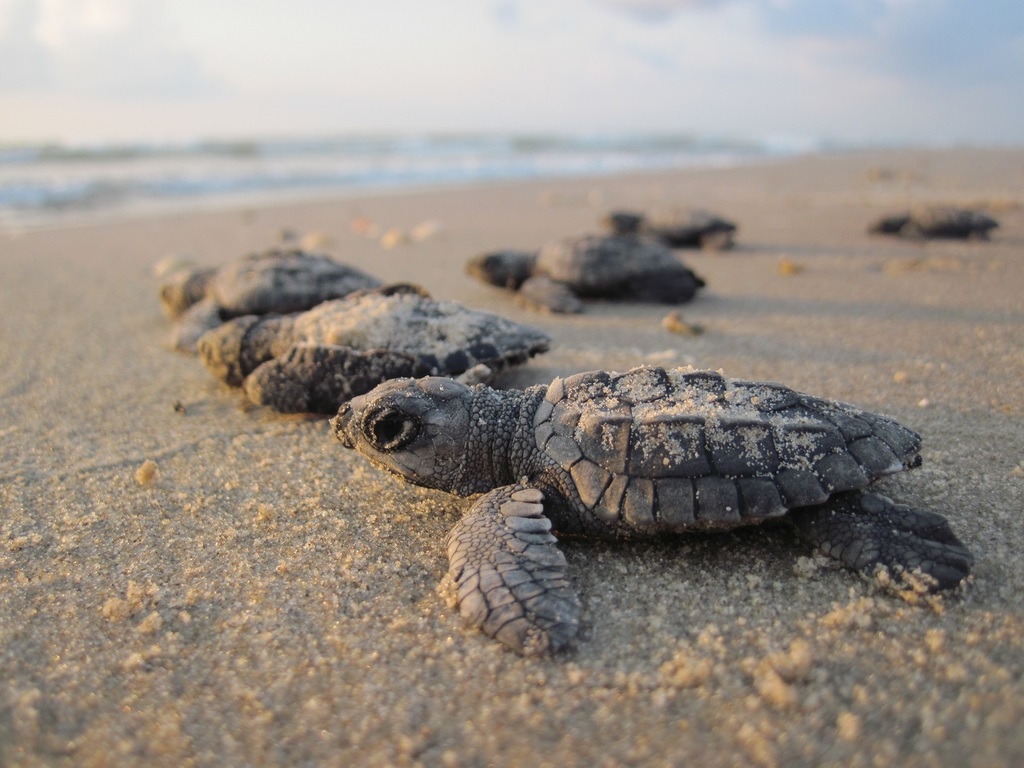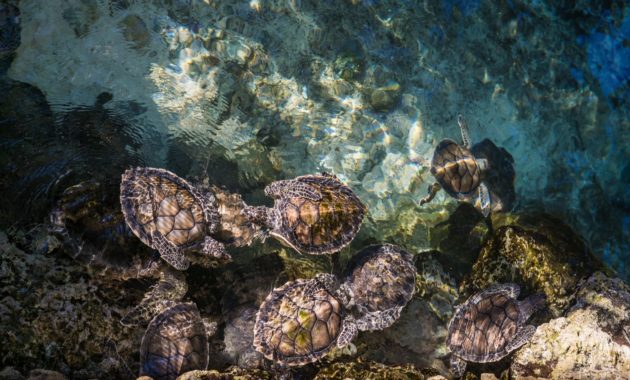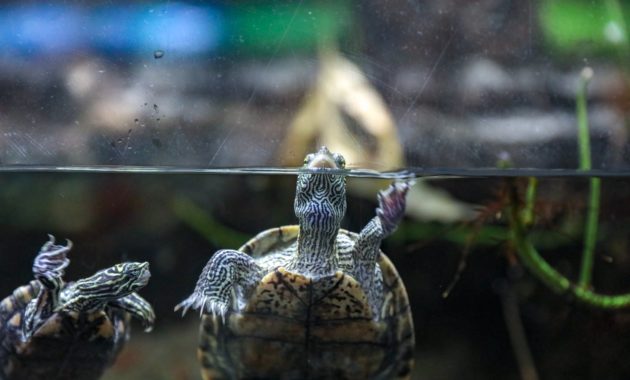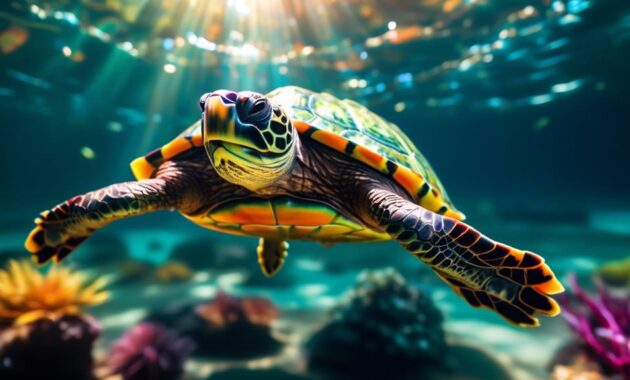
Embark on a journey beneath the shimmering surface of the water and discover a hidden gem of the aquatic world: the Chinese Stripe Necked Turtle.
Like a rare pearl nestled amongst the seafloor, this enigmatic creature beckons you to unravel its mysteries.
From its captivating appearance to its intriguing behaviors, the Chinese Stripe Necked Turtle embodies a level of uniqueness that tantalizes the senses.
So, prepare to be captivated as we dive into the depths of this extraordinary species, exploring its habitat, care requirements, and the remarkable conservation efforts dedicated to its preservation.
Key Takeaways
- The Chinese Stripe Necked Turtle is a small aquatic turtle found in eastern China, eastern Laos, central Vietnam, Taiwan, and Hainan.
- It has a lifespan of around 20 years and can thrive in tropical, subtropical, and temperate climates.
- The turtle has a narrow head with a slightly pointed snout and distinctive coloration, including black and yellow lines on the neck, a black to reddish-brown carapace, and a yellow plastron with black or brown blotches.
- When keeping the Chinese Stripe Necked Turtle as a pet, it requires a spacious enclosure, appropriate tank furnishings, specific temperature and lighting conditions, a high-quality water filter, and a varied omnivorous diet.
Size and Lifespan
The Chinese Stripe Necked Turtle is a small aquatic turtle with a lifespan of about 20 years. This turtle is known for its narrow head with a slightly pointed snout and scales covering its forelimbs. Its limbs are webbed, and it has strong muscles and webbed feet for powerful swimming.
The Chinese Stripe Necked Turtle can be found in eastern China, eastern Laos, central Vietnam, Taiwan, and Hainan. It can adapt to different climates, including tropical, subtropical, and temperate. This turtle prefers freshwater habitats like rivers, drainage ditches, ponds, and lakes. It can even swim in bodies of water with moderate currents.
The male and female Chinese Stripe Necked Turtles have some differences in size and appearance. Males have a slightly concave plastron, while females are bigger. The neck of this turtle is adorned with fine black and yellow lines, giving it its distinctive stripe-necked appearance. The carapace is black to reddish-brown, and the plastron is yellow with black or brown blotches. The limbs are olive with yellow lines, while the chin and jaw are cream-colored.
To keep a Chinese Stripe Necked Turtle as a pet, you’ll need an appropriate enclosure such as a glass tank, plastic storage bin, sweaterbox, or stock tank. The size of the enclosure will depend on the turtle’s gender. Females need at least 100 gallons of space, while males and females require a minimum of 150 gallons. It’s essential to provide secure tank furnishings suitable for the turtle’s size.
Maintaining the right water and air temperatures is crucial. The water temperature should be between 75-80F, the air temperature should be 80-85F, and the basking area temperature should be 85-90F. It’s also important to have an overhead UVB light and a high-quality water filter for clean water.
The Chinese Stripe Necked Turtle has an omnivorous diet, but mature females tend to be more herbivorous. Feeding this turtle is relatively easy as they rarely refuse food. However, it’s recommended to limit handling and purchase captive-bred turtles from reputable breeders.
The Chinese Stripe Necked Turtle is a good choice for a community tank and is known to be social, similar to sliders and cooters. When keeping multiple turtles together, the size difference between them shouldn’t exceed twice. It’s also important to limit handling unless necessary and support conservation efforts by purchasing captive-bred turtles.
Comparable Breeds
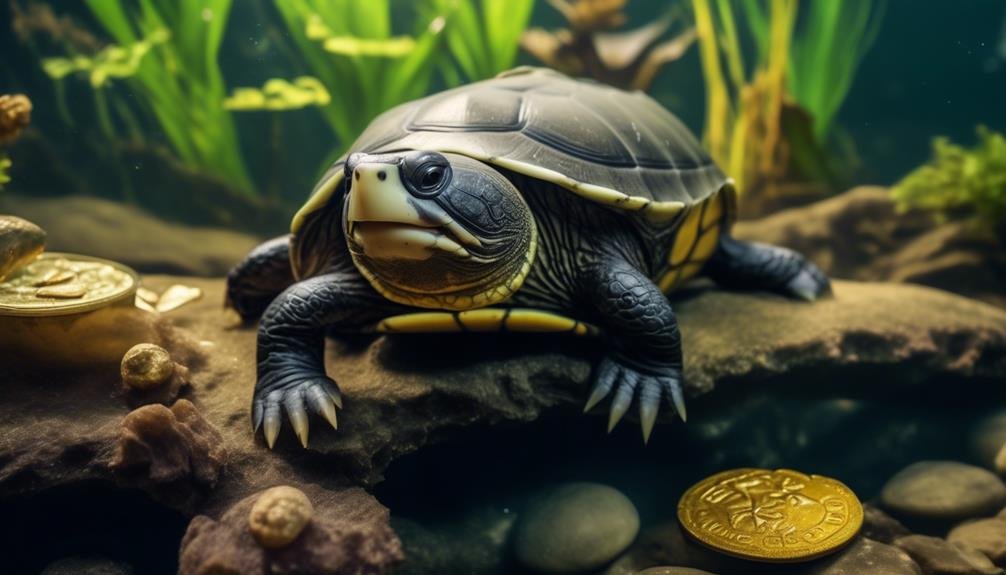
When considering other breeds similar to the Chinese Stripe Necked Turtle, you may want to explore the Red-Eared Slider Turtle and the Northern Map Turtle. These two breeds share some similarities with the Chinese Stripe Necked Turtle, making them worthy of consideration.
Here are some key points to know about these comparable breeds:
- Red-Eared Slider Turtle:
- Native to southern United States and northern Mexico
- Known for their vibrant red patch on each side of the head
- Can grow up to 12 inches in length
- Lifespan of up to 40 years
- Require a large aquatic enclosure with a basking area
- Northern Map Turtle:
- Found in North America, specifically in the Great Lakes region and surrounding areas
- Named for the map-like pattern on their carapace
- Males have a longer and wider tail than females
- Can reach up to 10 inches in length
- Omnivorous diet, feeding on both plants and small aquatic animals
Exploring these comparable breeds can provide you with more options when choosing the perfect turtle for your aquatic setup.
Native Habitat
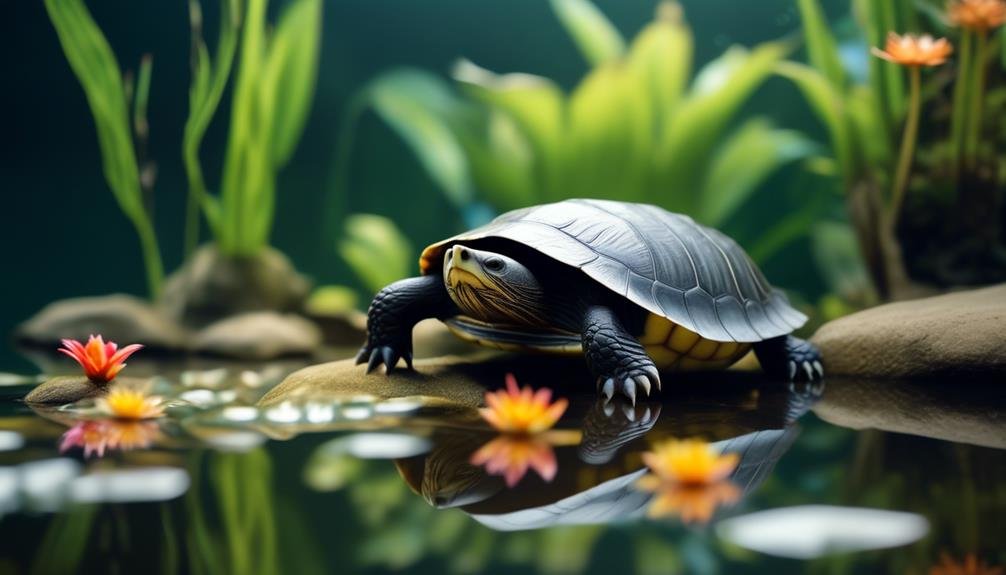
Consider the diverse range of habitats where the Chinese Stripe Necked Turtle can be found, from eastern China and eastern Laos to central Vietnam, Taiwan, and Hainan. These turtles are adaptable and can inhabit tropical, subtropical, and temperate climates. They are typically found in freshwater habitats such as rivers, drainage ditches, ponds, and lakes. With their strong muscles and webbed feet, they are well-equipped for powerful swimming and can navigate bodies of water with moderate currents. Here is a table summarizing the native habitats of the Chinese Stripe Necked Turtle:
| Habitat | Climate |
|---|---|
| Eastern China | Tropical, subtropical, temperate |
| Eastern Laos | Tropical, subtropical, temperate |
| Central Vietnam | Tropical, subtropical, temperate |
| Taiwan | Subtropical, temperate |
| Hainan | Tropical, subtropical, temperate |
These turtles have adapted to a wide range of environments, making them a remarkable species in the aquatic world.
Overall Description

Take a closer look at the Chinese Stripe Necked Turtle’s unique physical characteristics. This fascinating creature has a narrow head with a slightly pointed snout, giving it a distinctive appearance. Its forelimbs are covered in scales, and all of its limbs are webbed, allowing for powerful swimming abilities.
There are also notable differences between males and females: females are larger, while males have a slightly concave plastron.
In terms of coloration, this turtle boasts fine black and yellow lines on its neck, a black to reddish-brown carapace, and a yellow plastron with black or brown blotches. Its olive limbs feature yellow lines, and it has a cream-colored chin and jaw.
These physical traits make the Chinese Stripe Necked Turtle a truly remarkable aquatic marvel.
Environment and Care Requirements

Now let’s explore the necessary environment and care requirements for the Chinese Stripe Necked Turtle to thrive in captivity.
When it comes to their enclosure, you have options such as a glass tank, plastic storage bin, sweaterbox, or stock tank. Females require at least 100 gallons of space, while both males and females need a minimum of 150 gallons. Make sure to secure tank furnishings that are appropriate for the turtle’s size.
In terms of temperature, the water should be kept between 75-80F, while the air temperature should be maintained at 80-85F. Additionally, provide a basking area with a temperature of 85-90F. It’s crucial to have an overhead UVB light and a high-quality water filter to ensure clean water.
As for their diet, Chinese Stripe Necked Turtles are omnivorous, but mature females tend to be more herbivorous. They’re generally easy to feed and rarely refuse food.
Lastly, limit handling and consider purchasing captive bred turtles from reputable breeders to support conservation efforts.
Enclosure Options
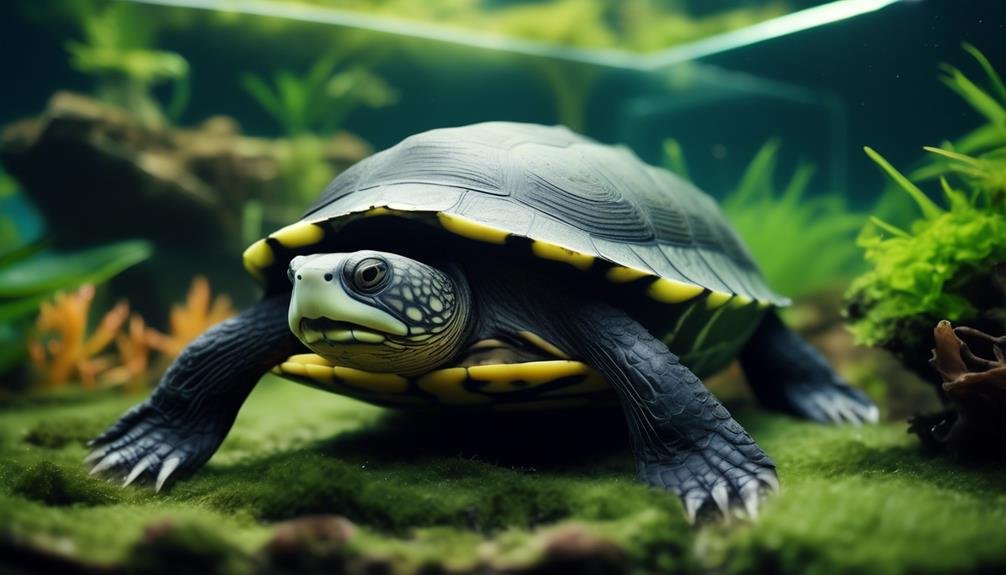
One possible option for housing the Chinese Stripe Necked Turtle is to use a glass tank or plastic storage bin as its enclosure. This provides a secure and spacious environment for the turtle to thrive.
Consider the following options:
- Glass tank:
- Provides excellent visibility for observing the turtle’s behavior and appearance.
- Can be equipped with a secure lid to prevent escape and protect the turtle from external factors.
- Plastic storage bin:
- Offers a cost-effective alternative to a glass tank.
- Allows for easy customization and modification, such as adding ramps or basking platforms.
Both options should be large enough to accommodate the turtle’s size, with females needing at least 100 gallons of space and males and females requiring a minimum of 150 gallons. Ensure that the enclosure is properly furnished with secure tank furnishings suitable for the turtle’s size.
Water and Temperature Requirements

To properly care for the Chinese Stripe Necked Turtle, it is important to understand its water and temperature requirements. These turtles require specific conditions to thrive and stay healthy. Here are the water and temperature requirements for the Chinese Stripe Necked Turtle:
| Water Temperature | Air Temperature | Basking Area Temperature |
|---|---|---|
| 75-80F | 80-85F | 85-90F |
Maintaining the right water temperature is crucial for the turtle’s overall well-being. It is recommended to use a high-quality water filter to ensure clean water. Additionally, the turtle needs a basking area with a temperature ranging from 85-90F. This area should be equipped with a UVB light overhead to provide the necessary UV rays for the turtle’s health. By providing the correct water and temperature conditions, you can create a suitable environment for your Chinese Stripe Necked Turtle.
Diet and Feeding
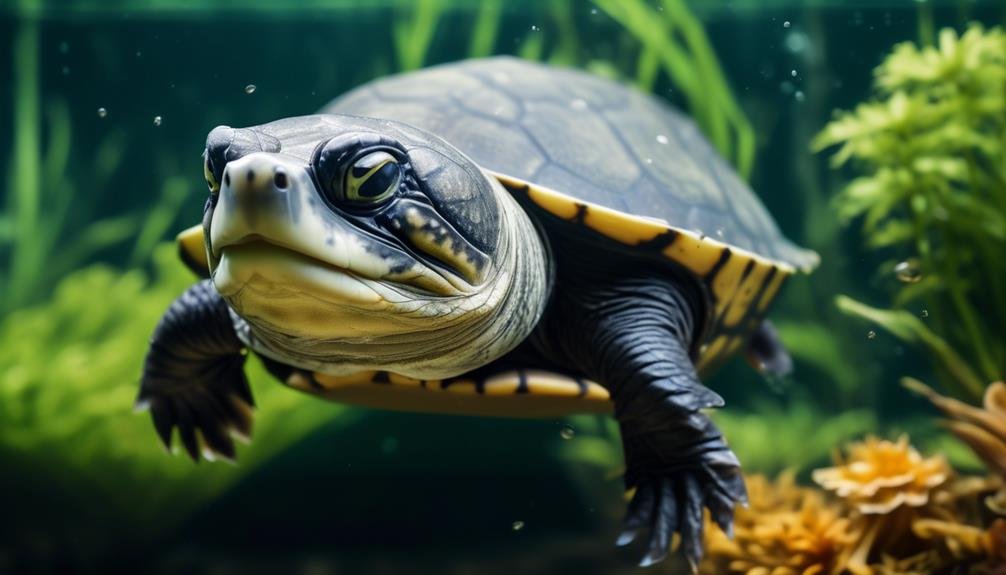
To properly meet the dietary needs of your Chinese Stripe Necked Turtle, it’s important to understand its feeding requirements. Here are some key points to keep in mind:
- Omnivorous Diet: Chinese Stripe Necked Turtles have an omnivorous diet, meaning they eat both plant and animal matter. Offer a variety of foods such as insects, worms, small fish, leafy greens, and aquatic plants to ensure a balanced diet.
- Feeding Frequency: Feed your turtle daily when they’re young, gradually reducing to 3-4 times a week as they mature. Monitor their weight and adjust the amount of food accordingly.
Behavior
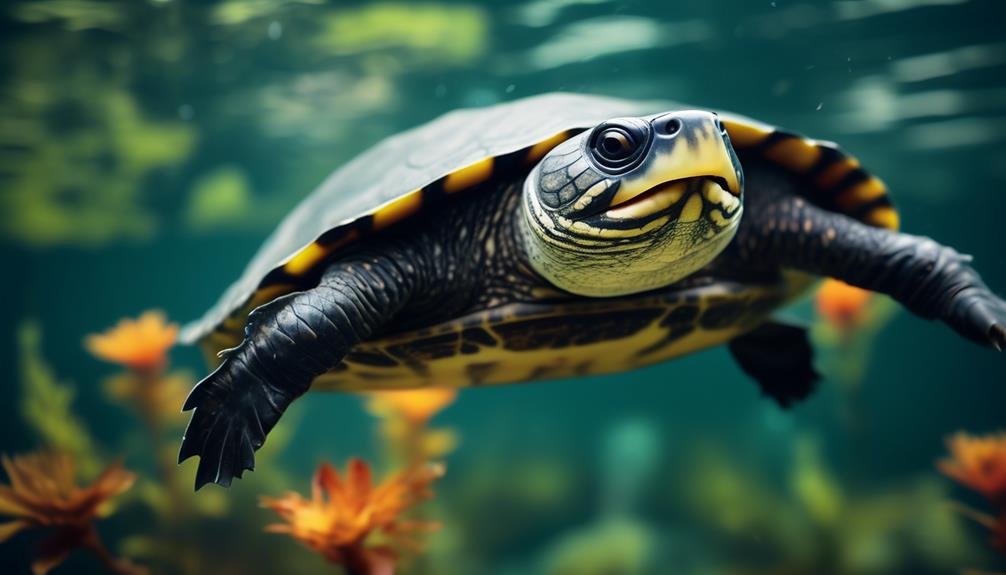
Chinese Stripe Necked Turtles exhibit a range of fascinating behaviors that are unique to their species. These turtles are a good choice for a community tank, as they’re social and can coexist with other turtles such as sliders and cooters. However, it’s important to note that the size difference between the turtles in the tank shouldn’t exceed twice.
It’s advisable to limit handling these turtles unless necessary, as they may become stressed or agitated. To support conservation efforts, it’s recommended to purchase captive bred turtles rather than wild-caught ones. By doing so, you can contribute to the preservation of these rare aquatic marvels.
Conservation Efforts

If you’re passionate about supporting the preservation of these rare aquatic marvels, it’s important to be aware of the conservation efforts surrounding Chinese Stripe Necked Turtles. Here are a few key points to help you understand the current conservation efforts:
- Protection of natural habitats: Efforts are being made to conserve and protect the natural habitats of Chinese Stripe Necked Turtles, including rivers, drainage ditches, ponds, and lakes. This involves implementing measures to prevent habitat destruction and pollution.
- Breeding programs: Captive breeding programs have been established to ensure the survival of these turtles. These programs focus on breeding healthy individuals and releasing them into their natural habitats to increase their population.
Frequently Asked Questions
Are Chinese Stripe Necked Turtles Suitable for Beginners?
Chinese Stripe Necked Turtles are suitable for beginners. They are easy to care for and have a lifespan of 20 years. With the right enclosure, temperature, and diet, they make a great addition to any turtle enthusiast’s collection.
Can Chinese Stripe Necked Turtles Be Kept Together With Other Turtle Species?
Yes, Chinese Stripe Necked Turtles can be kept together with other turtle species. Just make sure the size difference doesn’t exceed twice, and limit handling unless necessary. Support conservation efforts by purchasing captive bred turtles.
How Long Does It Take for Chinese Stripe Necked Turtles to Reach Their Full Size?
It takes Chinese Stripe Necked Turtles about 20 years to reach their full size. They are small in size and have a lifespan of 20 years.
Do Chinese Stripe Necked Turtles Require a Specific Type of Substrate in Their Enclosure?
Chinese stripe-necked turtles do not require a specific type of substrate in their enclosure. You can use materials like sand, gravel, or even a bare bottom. The most important thing is to provide a clean and spacious environment for them.
Can Chinese Stripe Necked Turtles Be Kept in Outdoor Ponds?
Yes, Chinese stripe-necked turtles can be kept in outdoor ponds. They are well-suited for freshwater habitats and can thrive in various climates. Ensure the pond is secure and provides appropriate temperature, water quality, and hiding spots.
What Are the Unique Features of the Chinese Stripe Necked Turtle Compared to the Argentine Snake-Necked Turtle?
The Chinese stripe-necked turtle is known for its distinct red stripes on the neck, while the Argentine snake-necked turtle has a long, slender neck with a snake-like appearance. The Argentine snakenecked turtle tends to have more varied coloration, including shades of brown, green, and black.
Conclusion
So, if you’re looking for a rare and unique aquatic creature to add to your collection, the Chinese Stripe Necked Turtle is definitely worth considering.
With its stunning appearance and intriguing behaviors, it’s a true marvel of the water. From its distinctive coloration to its social behavior, this turtle stands out among its counterparts.
With proper care and attention to its habitat and diet, you can enjoy the company of this fascinating creature for many years to come.

